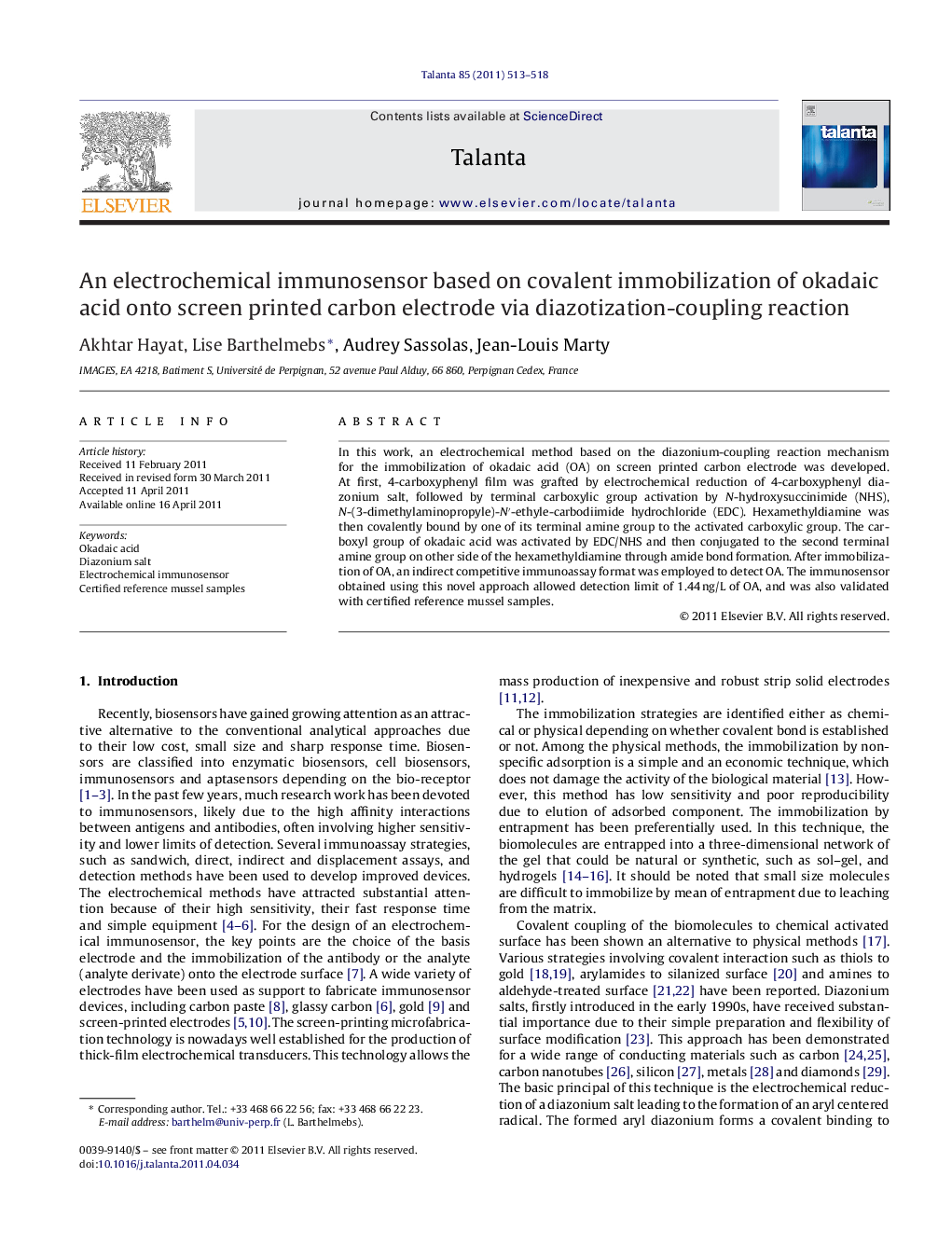| Article ID | Journal | Published Year | Pages | File Type |
|---|---|---|---|---|
| 10559822 | Talanta | 2011 | 6 Pages |
Abstract
In this work, an electrochemical method based on the diazonium-coupling reaction mechanism for the immobilization of okadaic acid (OA) on screen printed carbon electrode was developed. At first, 4-carboxyphenyl film was grafted by electrochemical reduction of 4-carboxyphenyl diazonium salt, followed by terminal carboxylic group activation by N-hydroxysuccinimide (NHS), N-(3-dimethylaminopropyle)-Nâ²-ethyle-carbodiimide hydrochloride (EDC). Hexamethyldiamine was then covalently bound by one of its terminal amine group to the activated carboxylic group. The carboxyl group of okadaic acid was activated by EDC/NHS and then conjugated to the second terminal amine group on other side of the hexamethyldiamine through amide bond formation. After immobilization of OA, an indirect competitive immunoassay format was employed to detect OA. The immunosensor obtained using this novel approach allowed detection limit of 1.44Â ng/L of OA, and was also validated with certified reference mussel samples.
Related Topics
Physical Sciences and Engineering
Chemistry
Analytical Chemistry
Authors
Akhtar Hayat, Lise Barthelmebs, Audrey Sassolas, Jean-Louis Marty,
